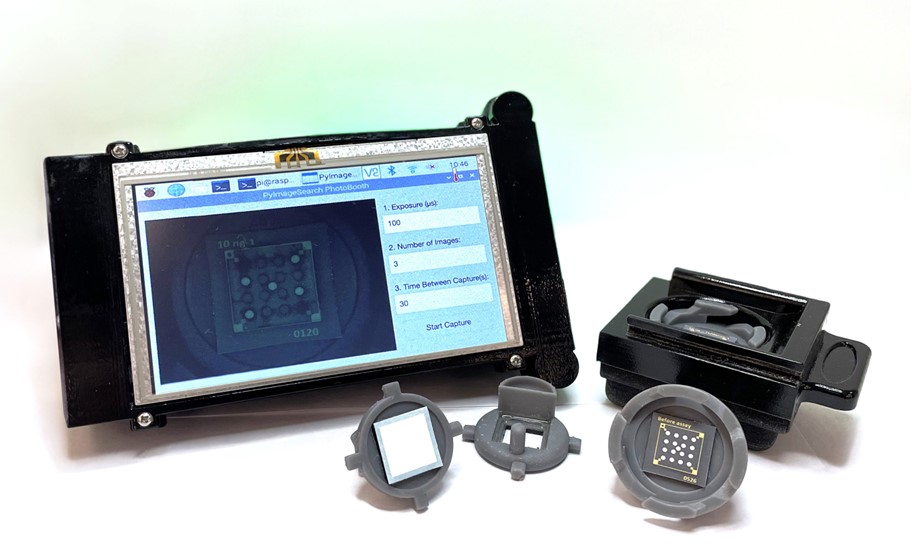In a remarkable development for point-of-care medical diagnostics, researchers at UCLA have unveiled a deep learning-enhanced paper-based vertical flow assay (VFA). This innovative technology can detect cardiac troponin I (cTnI) with impressive sensitivity and speed, potentially transforming the landscape of cardiac diagnostics, especially in resource-limited settings.
The Importance of Early Detection
Cardiovascular diseases (CVDs) remain a leading cause of mortality globally, responsible for over 19 million deaths each year. Early detection of conditions such as acute myocardial infarction (AMI), commonly known as a heart attack, is crucial for improving patient outcomes and lowering mortality rates. Traditional diagnostic methods often involve expensive laboratory equipment, making them inaccessible in low- and middle-income regions where healthcare resources are limited.
The urgency for affordable and rapid diagnostic solutions has never been more critical. This is where the UCLA team’s breakthrough comes into play.
Introducing the High-Sensitivity Vertical Flow Assay (hs-VFA)
The newly developed high-sensitivity vertical flow assay (hs-VFA) merges the accuracy of conventional laboratory tests with the convenience and cost-effectiveness of point-of-care technologies. According to their study, published in ACS Nano, this assay can quantify cTnI levels within 15 minutes using a small serum sample. This rapid response time makes it ideal for emergency situations or remote healthcare settings.
How It Works
The hs-VFA system operates in two primary stages:
- Immunoassay Phase: The test utilizes gold nanoparticle conjugates that bind to cTnI present in the serum.
- Signal Amplification Phase: This phase involves catalyzing gold ions with nanoparticles, resulting in a color change. A custom-designed portable reader captures this color change, while deep learning algorithms analyze the time-lapse images to enhance the sensitivity and accuracy of cTnI detection.
The integration of deep learning algorithms with nanoparticle amplification chemistry allows the hs-VFA to achieve a detection limit as low as 0.2 picograms per milliliter (pg/mL). This surpasses the sensitivity of existing point-of-care devices, fulfilling clinical requirements for high-sensitivity troponin testing essential for early AMI diagnosis.
A Game-Changer for Underserved Populations
Professor Aydogan Ozcan, senior author of the study and Volgenau Chair for Engineering Innovation at UCLA, emphasized the significance of this innovation: “We are excited to introduce this low-cost, portable solution that bridges the gap between central laboratory diagnostics and point-of-care testing.”
With a testing cost of less than $4 and a portable reader priced at approximately $170 (designed using Raspberry Pi technology and off-the-shelf components), the hs-VFA platform promises to democratize access to high-quality diagnostics. This affordability is especially vital in low-resource settings where traditional laboratory infrastructure may be lacking.
Precision and Reliability
The hs-VFA has undergone rigorous testing using both spiked and clinical serum samples. Results indicated a high degree of precision, with a coefficient of variation (CV) of less than 7%. Moreover, the assay demonstrated strong correlation with standard laboratory analyzers, reinforcing its reliability.
Importantly, the hs-VFA exhibits an extensive dynamic range, measuring cTnI concentrations from 0.2 pg/mL to 100 nanograms per milliliter (ng/mL). This wide range makes it suitable not just for diagnosing heart attacks, but also for monitoring patients at risk over time.
Impact on Prehospital Care
The ability to quickly and accurately detect troponin levels could drastically improve patient management during the critical prehospital phase of care. Dr. Gyeo-Re Han, the first author of the study, stated, “Our goal was to design a system that could be used not only in hospitals but also in clinics, pharmacies, and even in ambulances.”
This adaptability allows for faster diagnosis and treatment initiation, potentially leading to better health outcomes for heart attack patients.
Future Applications and Potential
Beyond its current application in cardiac diagnostics, the researchers believe that the hs-VFA platform could be adapted to detect other low-abundance biomarkers. This versatility positions it as a promising alternative to centralized laboratory testing for various medical conditions.
Broader Implications
As healthcare systems worldwide grapple with the challenges of access and affordability, innovations like the hs-VFA could represent a paradigm shift. The portability, simplicity, and cost-effectiveness of this paper-based assay could empower healthcare workers in underserved communities, allowing them to deliver timely and effective care.
Conclusion
The work undertaken by the UCLA team highlights the potential of integrating advanced technologies such as deep learning with traditional diagnostic methods. As the hs-VFA system moves closer to deployment, it promises to transform cardiac diagnostics, bringing critical healthcare solutions to those who need them most.
This research underscores the importance of innovation in addressing global health disparities and enhancing patient care, particularly in resource-limited environments. With continued efforts, we may soon witness a future where rapid, reliable cardiac diagnostics are accessible to everyone, regardless of their location or socioeconomic status.

